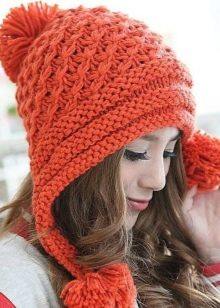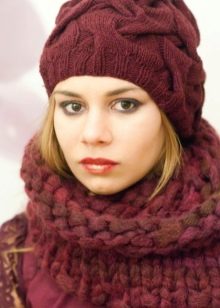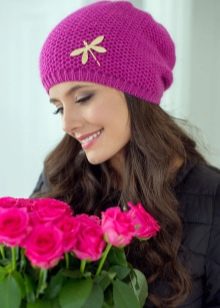Patterns for caps
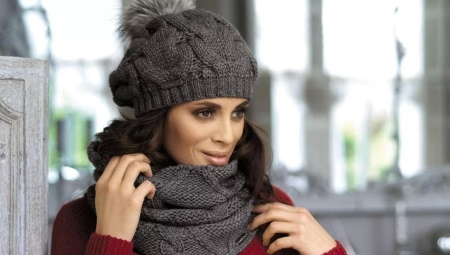
The choice of a pattern depends not only on preferences, but also on the skill level of the knitter. For beginners, it makes sense to pay attention to simple patterns that will not cause insurmountable difficulties in execution, will allow them to gain the necessary experience and please with the result.


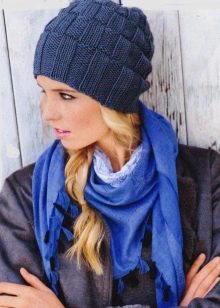
Experienced craftswomen can pick up something from a variety of complex openwork ornaments, but do not neglect the simple ones, which always look beautiful.
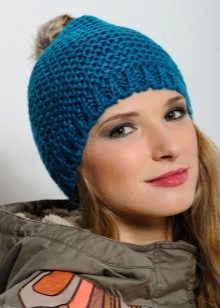
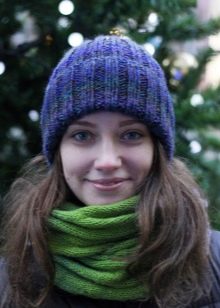

With the onset of cold weather, the hat becomes an irreplaceable attribute. Single-layer, double-layer, with or without a pompom, complex knit, simple knit, minimalistic or with a lot of bright details, they will never lose their relevance.
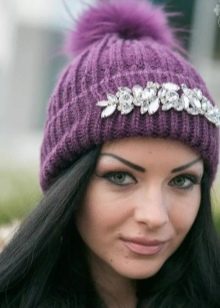

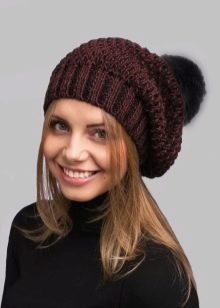
Patterns, which at the moment can be found in a large variety, will help to make the hat unique, so that everyone, even the most fastidious person, can find something to their liking. It should be noted that the pattern performs not only a decorative function, but also makes the hat denser and warmer.
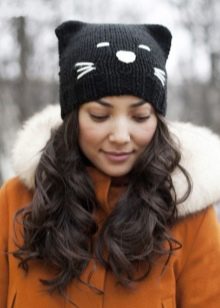


Choice of material and tools
Before talking about patterns for hats, you should pay attention to the materials and tools with which the hat will be made.
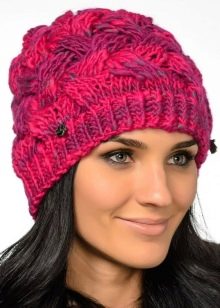
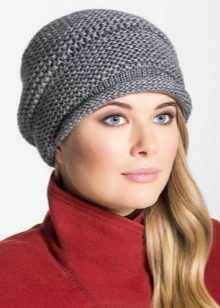
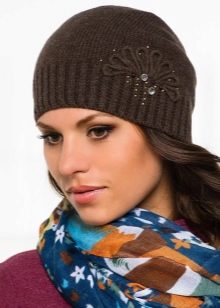
The choice of knitting needles directly depends on the yarn from which the product is planned to be made. As a rule, on the packaging with the yarn, they write what number of knitting needles should be knitted so that the density is optimal, and the fabric turns out to be the most even without too tightly and too loosely tightened loops.
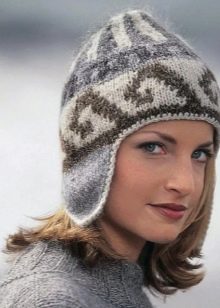
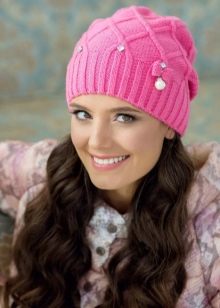
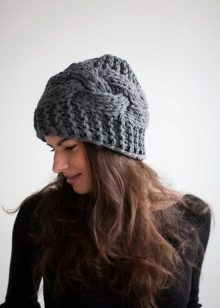
The most convenient way to knit hats is from yarn of medium thickness, the footage of which is about 250-300 meters per skein. Needles with a number 2.5-3 are ideal. But it is most difficult to knit from thin yarn (600-800 meters in a skein).Therefore, it takes a certain level of skill to work with such finicky material.
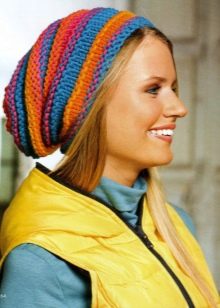

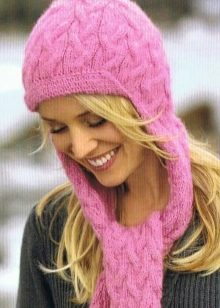
The fashionable last couple of seasons, thick-knit hats are made using knitting needles 8-12. As a rule, preference is given to garter stitching and front stitching, because it is problematic to make a pattern with such voluminous threads.
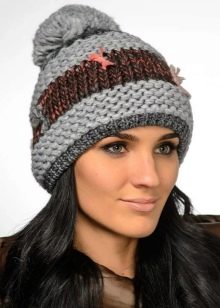
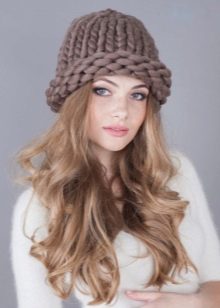
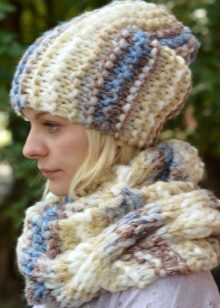
Today, a large number of yarns of various composition are presented on the market: from elite brands of natural wool to polyester at a very affordable price. Thanks to modern technologies, any yarn looks beautiful and retains its presentation for a long time. Therefore, the choice of the composition of the thread depends only on the personal preferences of each knitter.
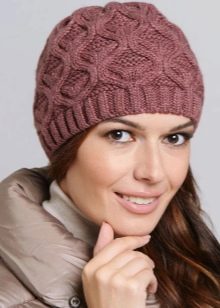
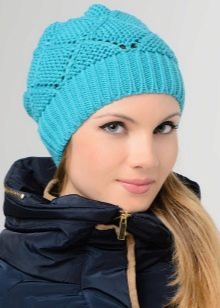
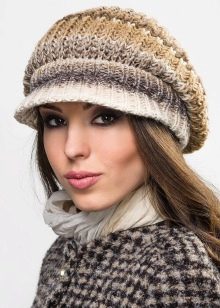
Simple patterns
For needlewomen with little experience, craftsmen are advised to start with simple drawings, which are based on garter stitch, purl or front surface. Spectacular geometric patterns of triangles, squares or rhombuses are created by varying the alternation of loops.
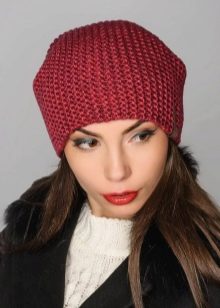

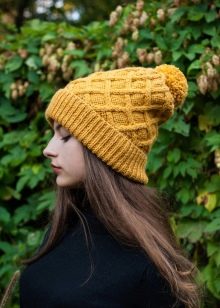
The simplest version of knitted fabric is garter knitting, in which all rows of the product are made with knit stitches. Garter stitch is the front surface on the front side of the product and, accordingly, the wrong side - on the wrong side. The "face" of the work can be any side of the canvas, depending on preferences.
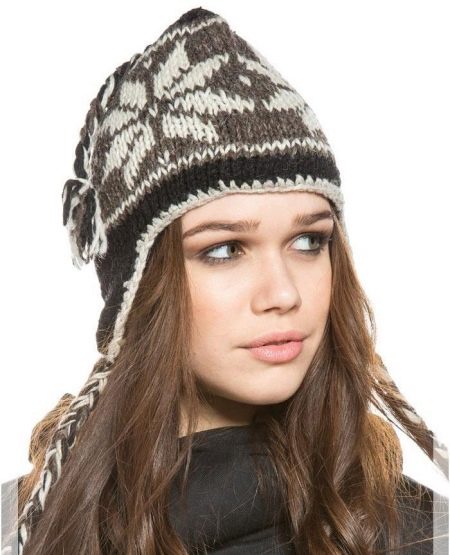
Elastic
This pattern, thanks to its simplicity and versatility, will never go out of style. Products made in this technique look neat and do not require high skill for successful execution.

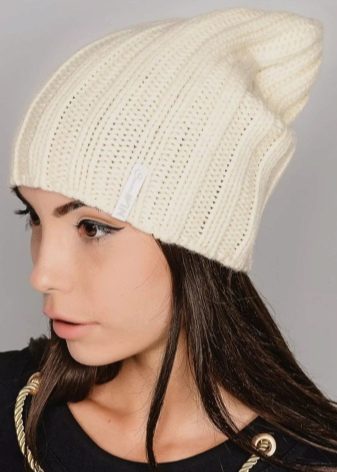
Elastic bands formed from vertical stripes combined from various loops are widely used in all their variety to create hats. The front loops in this pattern effectively fold into a bulge, and the back loops form a concave strip. The main feature of this pattern is its great extensibility and elasticity: due to which the product can stretch very strongly without losing its original shape.
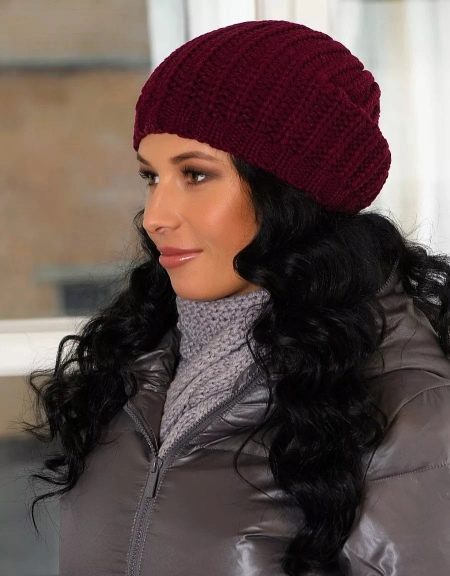
Consider the algorithm for performing a classic 2x2 elastic band, which can serve as the main pattern for the entire hat or beautifully design its lower part.
- You need to dial in an even number of loops, a multiple of two.
- Remove the first loop of each row without knitting (then the edge of the knitted fabric will be smooth and beautiful).
- We knit the first row, alternating 2 front and 2 purl loops.
- We knit the last loop of each row with a purl.
- We knit the rest of the rows, strictly observing the given order - front over front, purl over purl.
- Do not forget about the edge loops (we remove the first one, we knit the last one with the front one)!
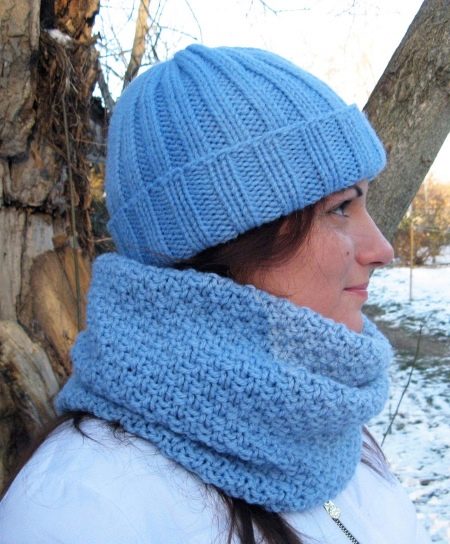
Garter knitting
No schematics are needed to complete this pattern! The algorithm (see description above) is very simple. The pattern is very nice and neat.

Such a hat can be decorated with decorative flowers or butterflies or embroidered with rhinestone patterns. Models made in this technique from yarn of bright shades will look advantageous.
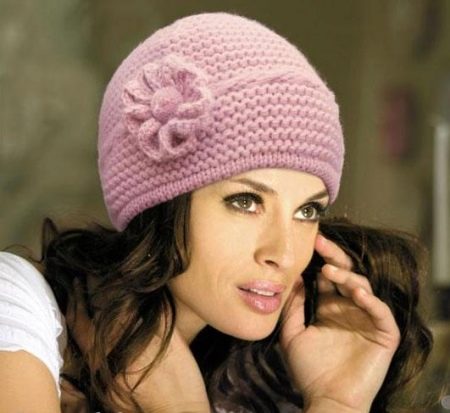
Chess
Another option that will appeal to fans of interesting textures, and will be very simple to execute. This pattern consists of alternating equal squares with front and back stitches. Thanks to this, it got its name.
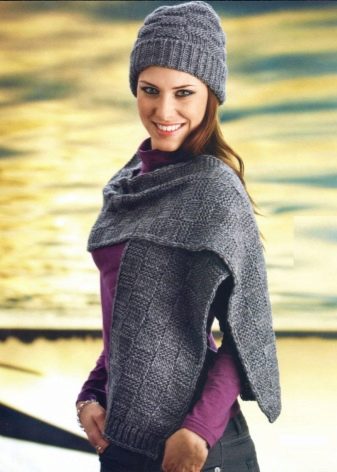

If desired, such a hat can be tied with an elastic band at the bottom or without it, in any case it looks very interesting.
- Dial the required number of loops, a multiple of 4, and add 2 loops to it, which will later serve as edging.
- From the first to the fourth row, we knit 4 front loops, 4 purl loops in turn.
- From the fifth to the eighth row we knit 4 purl, 4 facial.
- From the ninth to the twelfth we repeat the knitting of the first row.
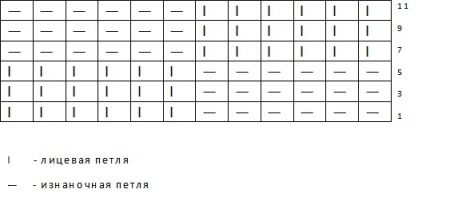
Embossed patterns
The relief pattern is an alternating sequence of front and back loops. The canvas comes out three-dimensional due to the combination of convex and concave areas of the design.A product made in this technique turns out to be dense, has no gaps, and the pattern looks very impressive and expressive. A huge variety of embossed patterns has been invented. The main difference is the size of the rapport.
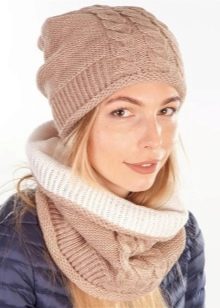
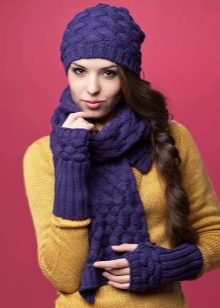
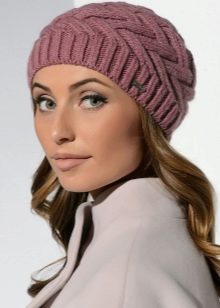
Ideally, these patterns are obtained from silk, cotton, cotton / rayon blends, and linen blended yarns. Thick yarns give a very embossed and voluminous pattern, while thin yarns give a noble, elegant structure to the product.
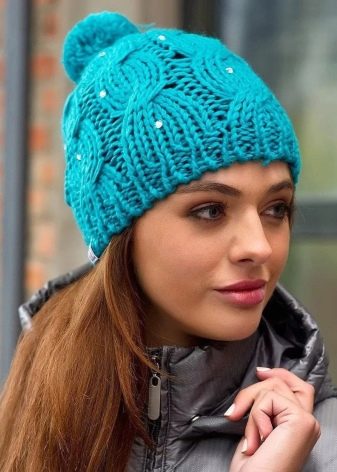
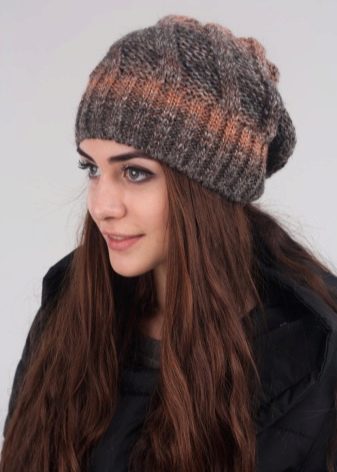
For beginner craftswomen, knitting of embossed patterns is suitable as a workout, since it does not present any particular difficulties. This will help you gain the necessary knitting experience and dexterity.

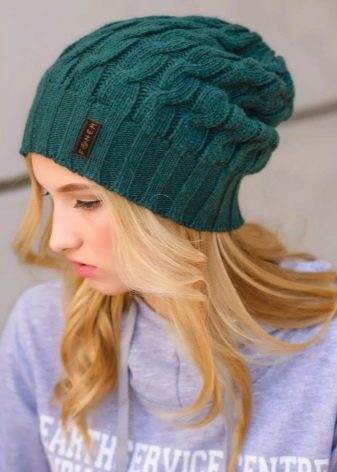
Confident craftswomen also do not deprive this kind of patterns of attention, because the reliefs look beautiful both by themselves and in combination with other knitting techniques, especially with openwork.
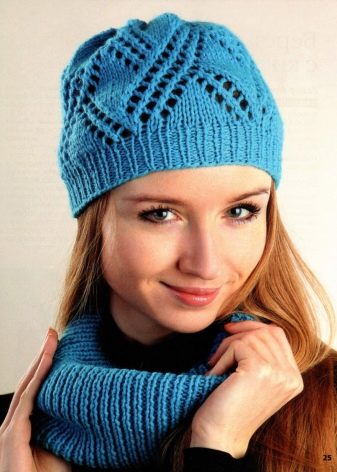
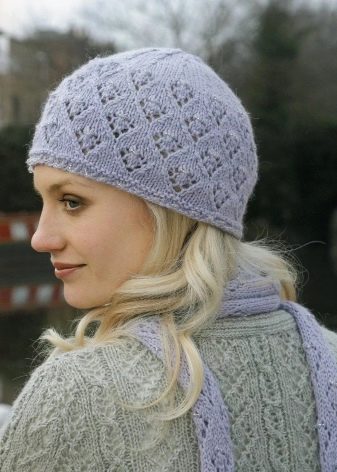
Honeycomb or pearl, both large and small, is an excellent choice for knitting warm hats and scarves. The product comes out very dense, and perfectly retains heat even in the most severe frost. In this technique, you can make a product with a transverse pattern, for example, stripes, a diagonal pattern, or make a beautiful wave that will transform the appearance and style of any, even the simplest, hat.
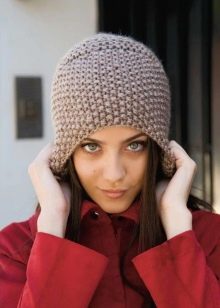
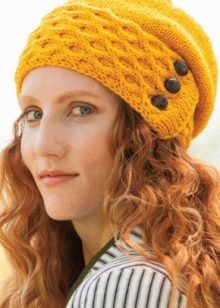
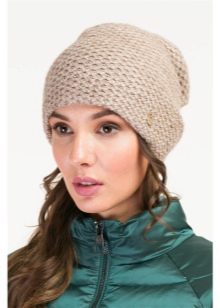
Network
Braids, spikelets or braids are very common and can be combined with other patterns, making them look fresh and original. You can make the braids in solid colors or knit them out of contrasting yarn.
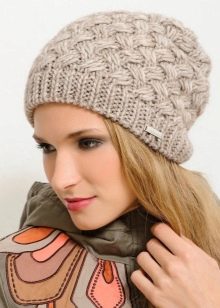
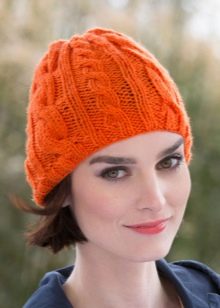
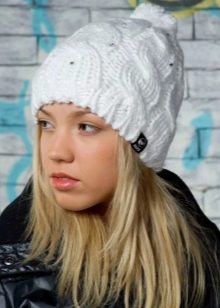
Braids add additional volume and density to the product, thanks to which it retains heat better and protects from severe winter frosts, such a pattern can be done as a two-color pattern.
- It is necessary to dial the number of loops in multiples of eight and add 2 edge loops.
- In the first row, four front and four purl loops alternate.
- In the second, they change places: four purls are followed by four facial ones.
- In the third row, two loops are removed on an additional knitting needle, the front ones are knitted, and then those loops that we transferred to the additional knitting needle are knitted, then we perform four knit loops.
- The fourth row repeats the second: purl four, then facial four.
"Bumps"
"Bumps" or pearl patterns are made by knitting several loops from one. They can be represented by both very small "peas" and large ones. The most effective combination is "bumps" and the front or back surface. It is worth noting that combinations with other patterns look no less advantageous. On children's models, you can make pearls from yarn of a different color, placing them in any way you like.
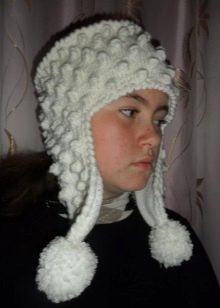
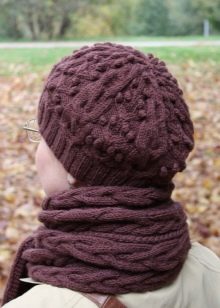
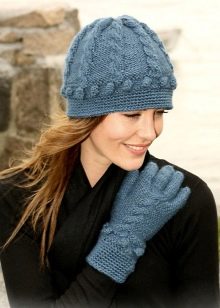
Knitting needles can knit "bumps" in several ways. Let's consider one of them.
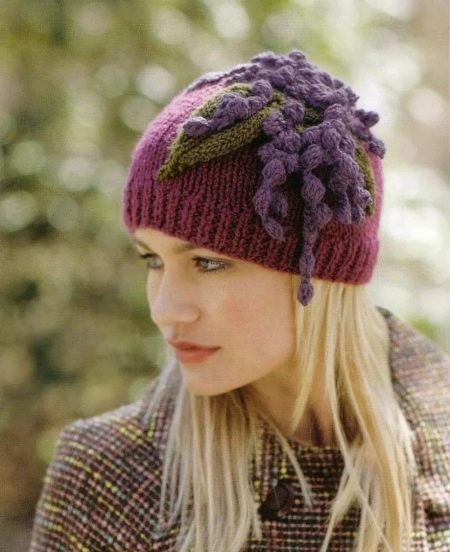
"Bumps" from an odd number of loops
This method of knitting "bumps" is the most common.
From one loop, a front loop is first knitted, then a yarn is made, again a front loop is knitted from the same loop, then a yarn, and so on, yarns are alternated with front loops until the desired odd number of loops is obtained (as a rule, from three to seven pieces, depending on from the desired size of the future "bump").
The last one must be knitted with the front loop, then the loop from which the "knob" was tied is discarded from the left knitting needle. And thus, from one loop, three are obtained.
Jacquard knit
The well-known jacquard knitting stands apart. Clothes with a Norwegian pattern look very cozy and original and will probably never go out of style. Jacquard-patterned hats, scarves and sweaters look very unusual. In most cases, craftswomen give preference to a two-color pattern, because it looks restrained and, moreover, very beautiful. Traditionally, Norwegian patterns are used in such knitting: snowflakes, stars, deer, geometric shapes, for example, rhombuses, or even cityscapes.
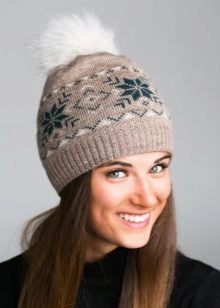
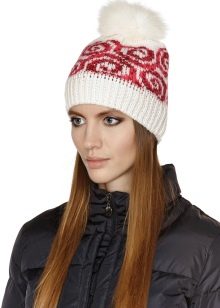

For men
Men, no less than women, want to look stylish and elegant.However, the hats sold in stores do not always match in color, size or texture.
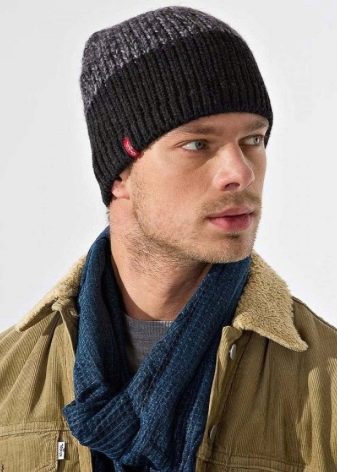
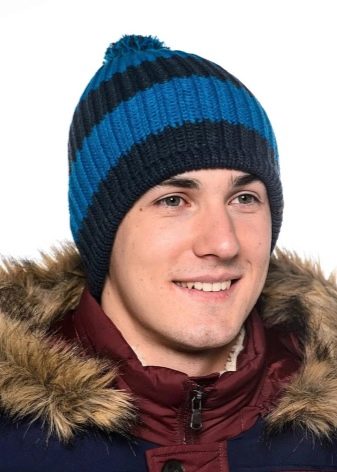
And not everyone will like the drawing. However, if your wife or mom knows how to knit, you don't have to worry. Few can resist a headdress made by the caring hands of a beloved woman.
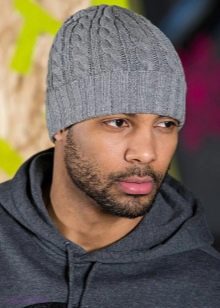
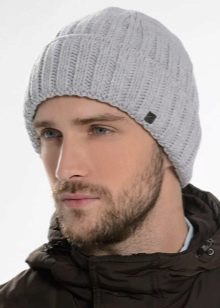
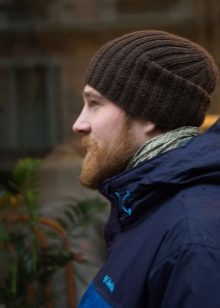
There are no patterns for hats only for men or only for women. They are generally versatile. However, it has been noticed that most men prefer discreet, no-frills models, for example, with a rice pattern, made in soothing colors that are in harmony with their winter clothes.
